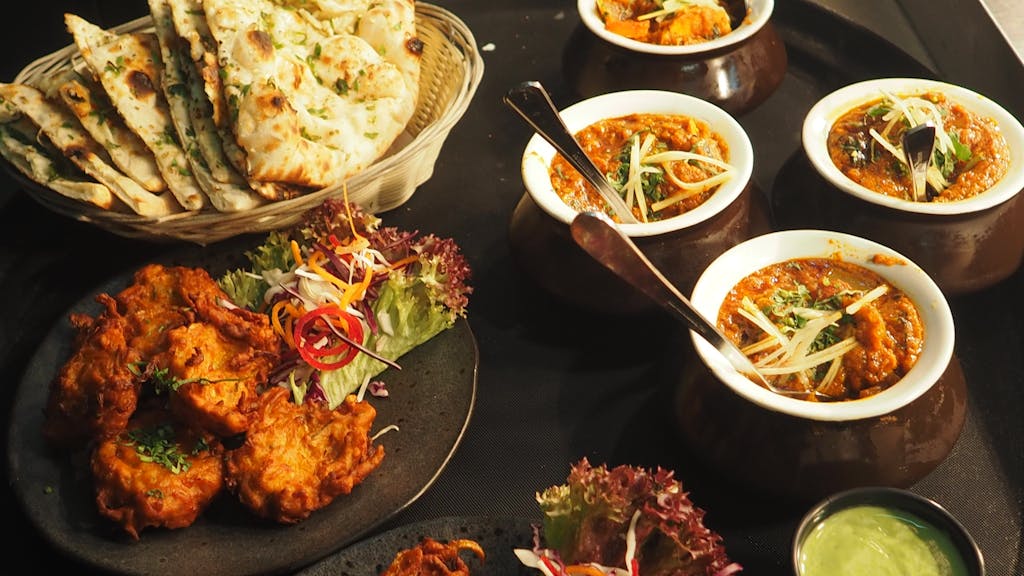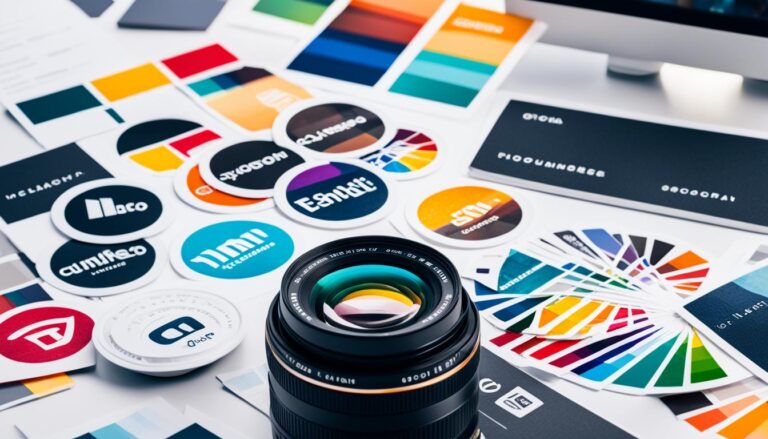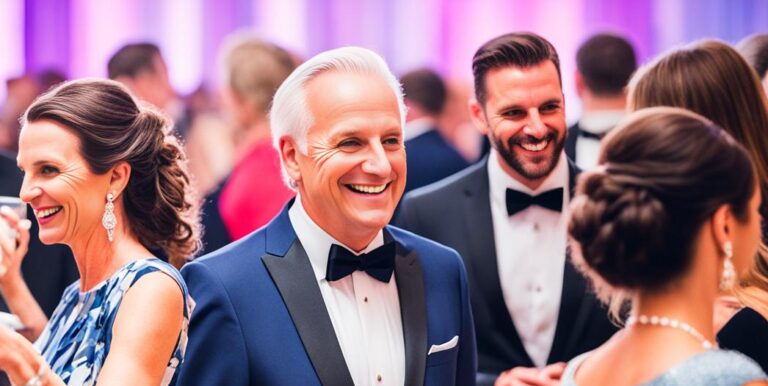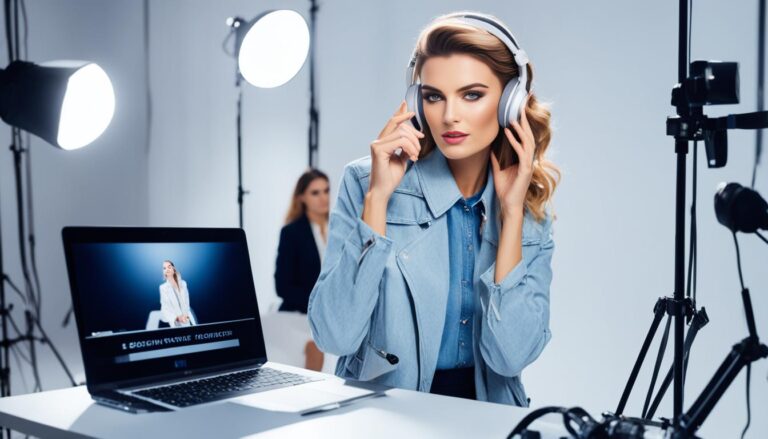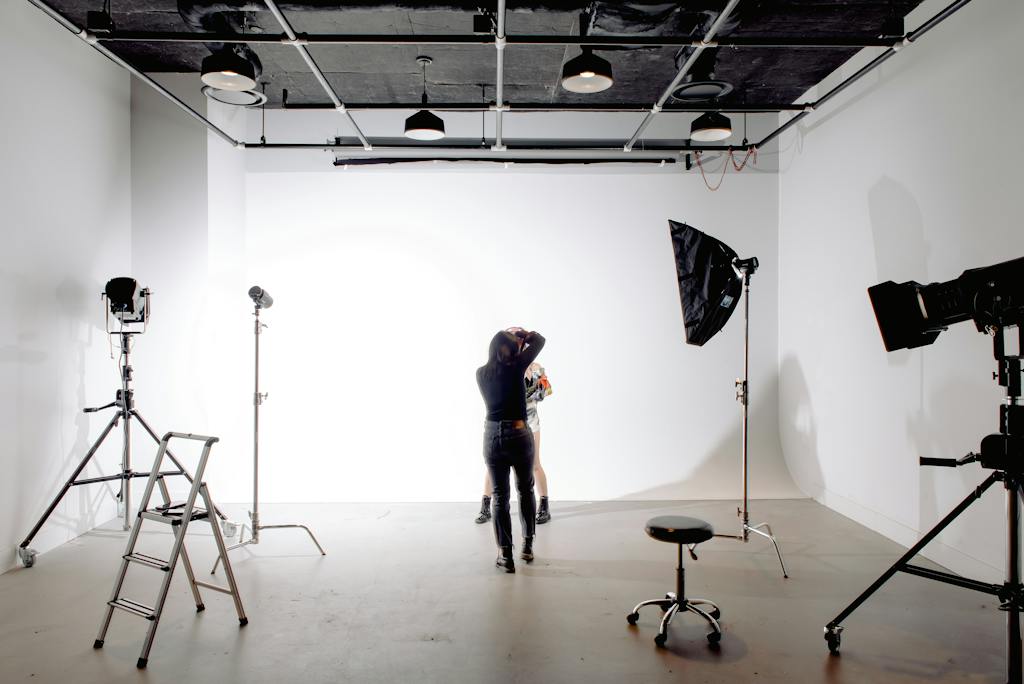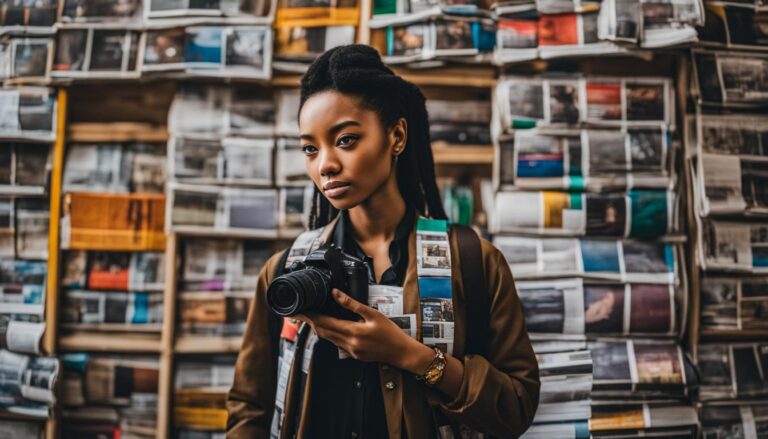How to Become a Food Photographer
Have you ever been captivated by the stunning images of delectable dishes in cookbooks or restaurant menus? The way the food seems alive through the lens entices you with its vibrant colours and mouthwatering presentation. I know that feeling all too well. My name is Emily, and I have always had a deep passion for photography and food. Combining these two loves to become a professional food photographer has been a dream come true for me.
If you find yourself drawn to the art of food photography, you’re in the right place. In this article, I will guide you through the steps to embark on an exciting career in food photography. Whether you’re a budding photographer looking to specialize in food imagery or someone with a culinary background wanting to explore the visual side of the culinary world, I will provide you with the knowledge and skills to get started.
Key Takeaways
- Becoming a professional food photographer requires a passion for both photography and food.
- Combining technical photography skills with an understanding food styling and presentation is essential.
- Building a strong portfolio and networking with potential clients is crucial for success in the industry.
- Investing in quality equipment and continuously refining your craft is key to staying competitive.
- Understanding the culinary world and developing cooking skills can enhance your food photography.
The Artistic Fusion of Food and Photography
Food photography is the artistic fusion of food and photography, capturing delicious dishes’ beauty, taste, and essence. It is a specialized genre that requires skilful execution to showcase food in its most delicious form.
“Food photography, when done right, goes beyond capturing an image of food. It has the power to evoke emotions, tell stories, and create visual appeal that entices viewers to taste and experience the food.”
Defining Food Photography
Food photography is using photography techniques and styling to capture stunning food images. It involves careful composition, lighting, and presentation to showcase the food’s best attributes. Whether it’s capturing a sizzling steak, a beautifully plated dessert, or a vibrant salad, food photography aims to highlight the visual appeal and textures of the dishes.
Food photography is widely used in various contexts, including restaurant menus, cookbooks, culinary blogs, and social media platforms. It plays a crucial role in influencing consumer choices by creating a desire to taste the food based on its visual representation.
Why Food Imagery Matters
Food imagery has a profound impact on our perception and experience of food. It can evoke emotions, spark cravings, and stimulate the senses. Studies have shown that visual appeal is a significant factor in food selection, and well-crafted food images can entice viewers to try new dishes or visit a restaurant.
Food photography is also a powerful storytelling medium, enabling chefs, food stylists, and photographers to convey ideas, cultures, and narratives through images. Each photograph tells a unique story, inviting viewers to step into the world of the dish and experience its flavours and textures vicariously.
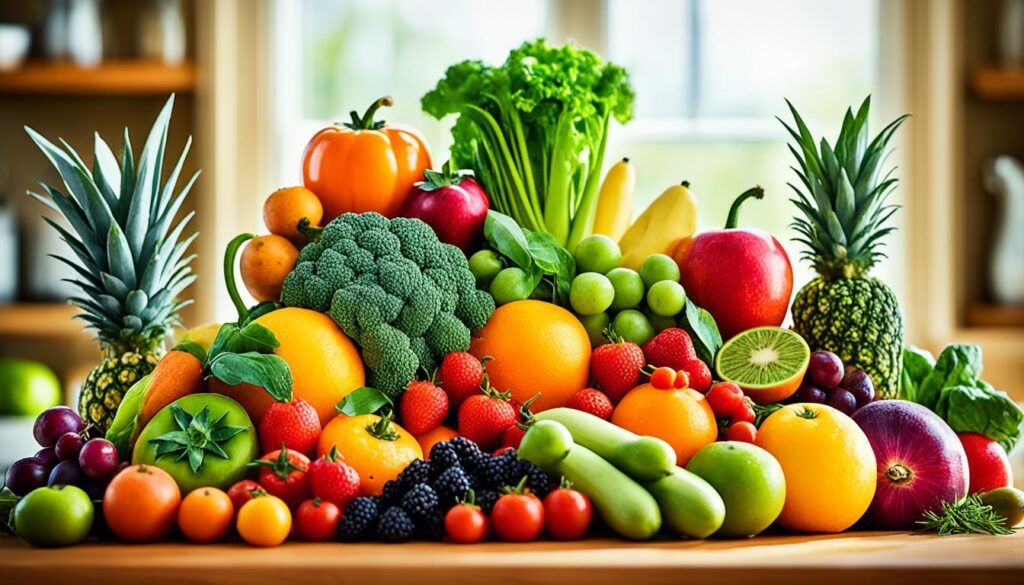
| Image 1 | Image 2 |
|---|---|
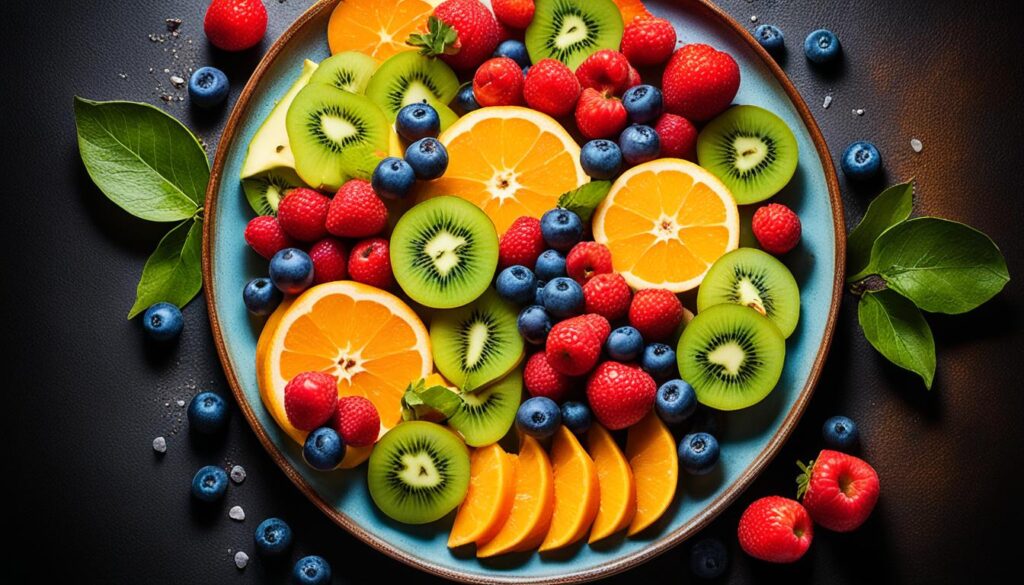 | 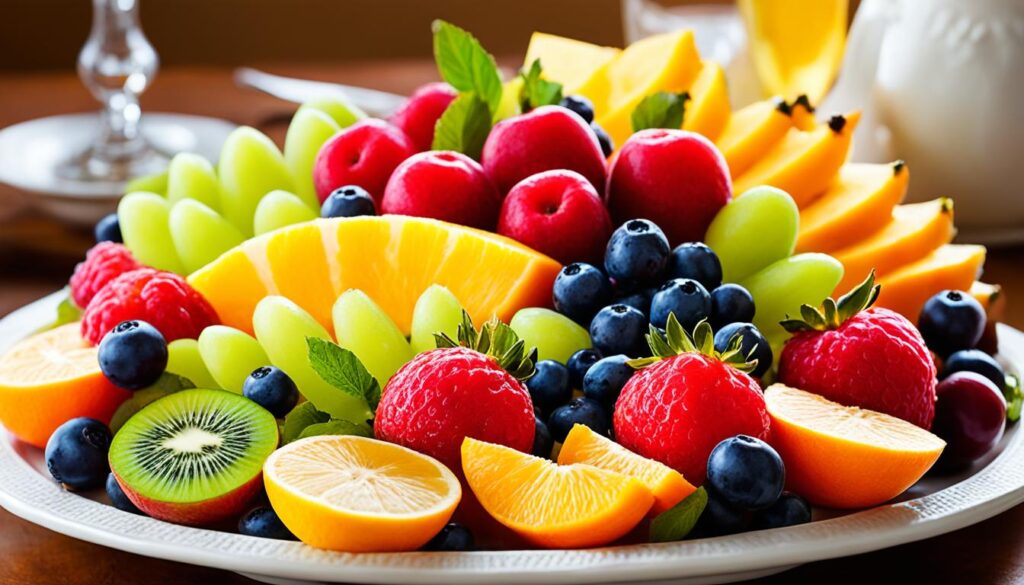 |
| Image 1: A beautifully composed image of a vibrant salad, highlighting the freshness and colours of the ingredients. | Image 2: An expertly captured image of a chocolate cake showcasing the indulgence and decadent nature of the dessert. |
As you can see from these examples, food photography can evoke different emotions and create a visual appeal that entices viewers to taste and experience the food.
Crafting Delicious Images: The Role of Food Photographers
Food photographers play a crucial role in capturing the essence of food and creating mouthwatering images that stimulate our senses. Their expertise and skills in capturing the perfect shot are instrumental in showcasing the visual appeal of food. From capturing the proper lighting to working closely with food stylists to create stunning compositions, food photographers are the visual storytellers behind every delectable dish.
Lighting Techniques: One of the key aspects of food photography is mastering lighting techniques. Proper lighting can enhance the food’s textures, colours, and details, making it look more appetizing. Food photographers use various techniques, such as natural light, artificial light, and diffusers, to control the lighting and create the desired ambience for the photograph.
Composition: Composition is another essential element in food photography. Food photographers carefully arrange and style the food to create visually appealing compositions. They consider factors like the placement of the dish, the use of props, and the incorporation of complementary colours and textures to create a visually pleasing image that tells a story.
Collaboration with Food Stylists: Food photographers often collaborate closely with food stylists to ensure that the food is presented in the most appealing way possible. Food stylists meticulously arrange the food, garnishes, and props to create an aesthetically pleasing setup for the photograph. The synergy between the photographer and stylist is crucial in creating stunning images that capture the dish’s essence.
Food photographers play a vital role in capturing the beauty and allure of food. Through their expertise in lighting techniques, composition, and collaboration with food stylists, they transform ordinary ingredients into mouthwatering works of art. Their craft satisfies our visual appetite and entices us to explore the delicious world of food.
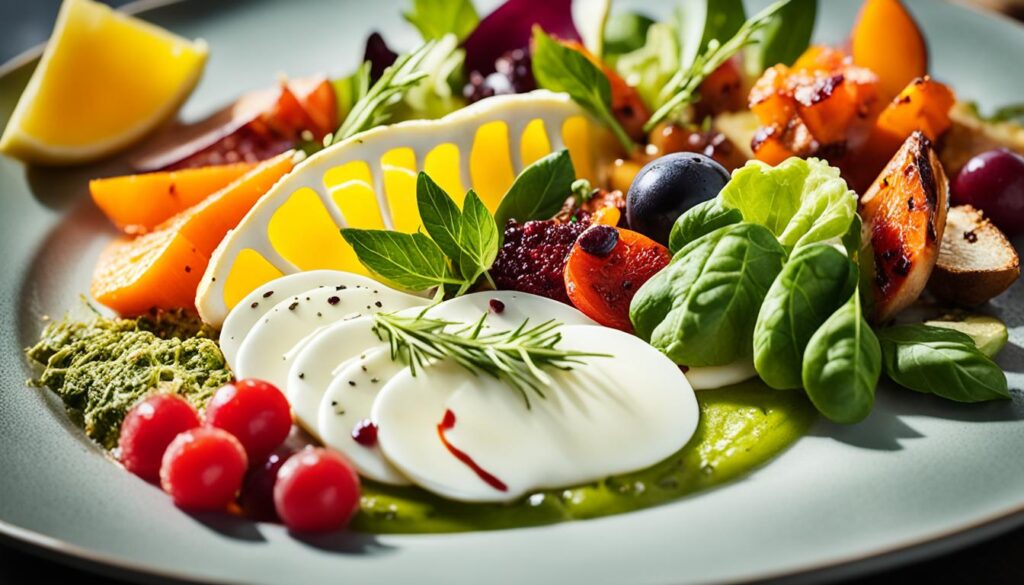
Becoming a food photographer requires combining photography skills, qualifications, experience, networking, and finding clients. Here are the steps to guide you on your journey towards a successful career in food photography in the UK:
- Develop photography skills: Start by mastering the technical aspects of photography, such as understanding exposure, composition, and lighting. Experiment with different techniques and styles to hone your craft.
- Gain photography qualifications: While formal qualifications are not always necessary, pursuing a degree or certification in photography can provide you with a solid foundation and enhance your credibility as a professional food photographer.
- Build experience: Practice is key to improving your skills and portfolio. Start by photographing food at home and experimenting with different dishes and presentation styles. Consider collaborating with local restaurants or food bloggers to gain real-world experience.
- Network: Networking is essential for connecting with industry professionals, potential clients, and fellow photographers. Attend photography events, join photography communities, and engage with food-related platforms on social media to expand your network.
- Find clients: Establishing a client base is crucial to a successful food photography career. Reach out to local restaurants, cafes, food publications, and businesses in the food industry. Create a compelling portfolio and showcase your work effectively to attract clients.
Following these steps, you can embark on your journey to become a skilled and sought-after food photographer. Remember, building a successful career in food photography takes time, persistence, and continuous improvement.
Choosing the Right Equipment for Food Photography
Regarding food photography, having the right equipment is essential to capture stunning images that showcase the beauty and details of delicious dishes. In this section, I will guide you through the must-have gear for food photography, starting with the basics and exploring the advantages of using DSLR cameras and investing in quality lenses.
Starting with the Basics: DSLR Cameras
DSLR cameras are popular among professional food photographers due to their versatility and image quality. These cameras offer manual controls, allowing you to adjust settings such as aperture, shutter speed, and ISO to achieve the desired result.
With a DSLR camera, you can experiment with different lenses and settings, giving you complete control over the composition and focus of your food images. Capturing high-resolution photos helps showcase the intricate details and textures of the dishes.
To capture the perfect shot, consider investing in a DSLR camera with features like a large sensor for better image quality, interchangeable lenses for versatility, and manual controls for complete creative control.
One recommended DSLR camera for food photography is the Canon EOS 5D Mark IV, known for its exceptional image quality and low-light performance.
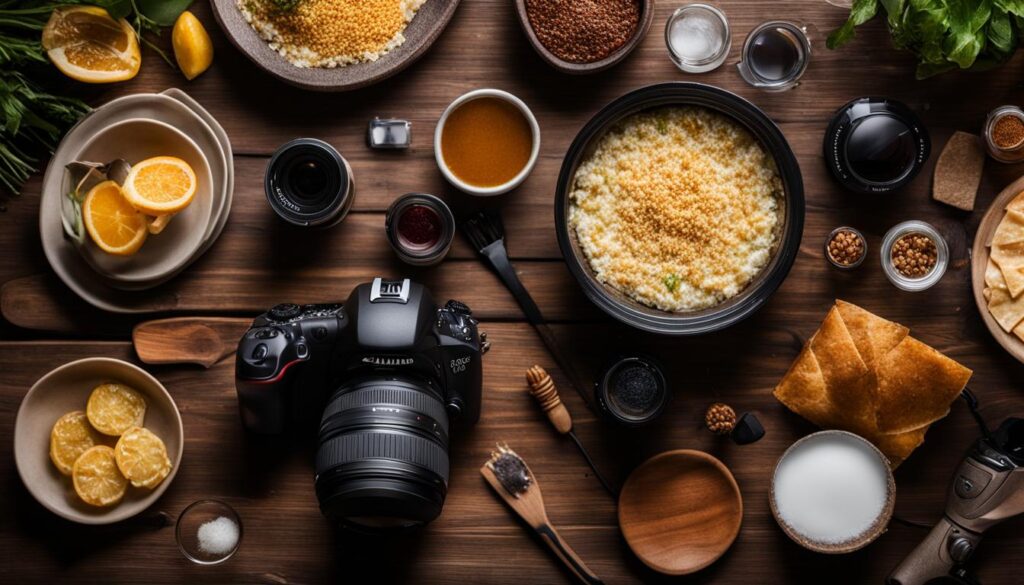
Investing in Quality Lenses
Aside from a DSLR camera, investing in quality lenses is crucial for achieving professional-looking food photography. Different lenses offer various focal lengths and characteristics that can enhance your food images.
One popular lens choice for food photography is a prime lens with a focal length of around 50mm. These lenses provide a natural perspective and allow for close-up shots without distortion. They are great for capturing the intricate details and textures of food.
Another lens option is a macro lens, specifically designed for close-up photography. Macro lenses have a high magnification ratio and excellent sharpness, allowing you to capture the most minor details of the food, such as individual grains of salt or the texture of a strawberry.
One highly recommended lens for food photography is the Canon EF 50mm f/1.8 STM, known for its affordability and excellent image quality.
In addition to a DSLR camera and lenses, you should consider other essential gear items for food photography, such as a tripod for stability, lighting equipment for proper illumination, and reflectors or diffusers to control and manipulate light.
By choosing the right equipment for food photography, you can elevate the quality of your images and capture the mouthwatering details that make food so enticing.
Nurturing a Keen Eye for Food Styling
Food styling is an essential aspect of food photography. It’s important to consider the presentation, prop selection, plating techniques, and colour and texture to create visually appealing dishes that truly stand out.
Regarding food presentation, think about how you can showcase the dish in the most enticing way possible. Consider the arrangement of the food, the angles you shoot from, and the overall composition of the image. Experiment with different plating techniques to create interesting shapes and structures that enhance the visual appeal of the food.
Props can play a significant role in food styling, helping to create a captivating scene and add context to your images. Choose props that complement the food and enhance the overall aesthetic. For example, if you’re photographing a rustic dish, consider using wooden boards or vintage utensils to create a sense of authenticity.
Colour and texture are two key elements that can significantly impact the visual appeal of your food images. Please pay attention to the colours of the ingredients and how they complement each other. Additionally, consider adding texture elements, such as crunchy toppings or smooth sauces, to create visual interest and depth in your photographs.
Developing a keen eye for food styling takes practice and experimentation. Don’t be afraid to try new techniques, play around with different props and plating ideas, and, most importantly, trust your creative instincts. With time and dedication, you’ll be able to master the art of food styling and create captivating food images that truly showcase the deliciousness of your dishes.
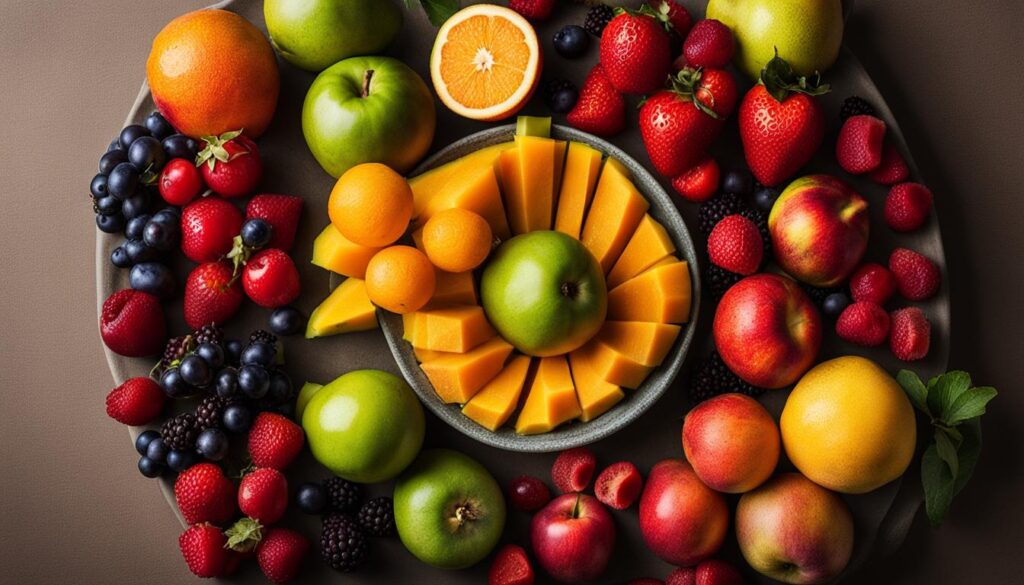
Building Your Food Photography Portfolio
A strong portfolio is essential for establishing yourself as a food photographer. It showcases your skills, creativity, and unique style, making it a powerful tool for attracting potential clients and showcasing your expertise. In this section, I will guide you through building a compelling food photography portfolio to impress and captivate you.
Elements of a Strong Portfolio
When building your food photography portfolio, there are several key elements to consider:
- Image Selection: Curate a collection of your best food images that demonstrate your technical proficiency and artistic vision. Choose a variety of dishes, styles, and compositions to showcase your range and versatility.
- Storytelling: Craft a visual narrative in your portfolio that tells a story and engages viewers. Use images that evoke emotions, capture the essence of the food, and transport the viewer into the culinary world.
- Showcasing Your Style: Develop a unique style and aesthetic that differentiates you from other food photographers. Let your style shine through in your portfolio, whether it’s minimalist, vibrant, or rustic.
Incorporating these elements into your portfolio will create a cohesive and visually captivating collection of images that leave a lasting impression on potential clients.
Strategies for Portfolio Presentation
Once you have built your food photography portfolio, it’s essential to present it in a way that maximizes its impact. Here are some strategies to consider:
- Online Portfolio: Create a visually appealing and user-friendly website or portfolio to showcase your work. Organize your images into categories or projects, allowing viewers to navigate and explore your portfolio easily.
- Printed Portfolio: Consider creating a printed portfolio to leave a lasting impression during in-person meetings or portfolio reviews. Choose high-quality prints and presentation materials that complement your images.
- Social Media Presence: Use social media platforms like Instagram or Pinterest to share your food photography portfolio. Regularly update your profiles with new images and engage with your audience to expand your reach.
Remember, your portfolio is a living document that should evolve and adapt as you grow as a photographer. Continuously update and refine your portfolio to reflect your latest work and showcase your continued growth and skill development.

Master the Techniques: Photography Skills and Editing
Mastering photography techniques and editing skills is essential for a successful food photographer. This section will explore techniques and considerations to help you capture stunning food images. Let’s dive into food photography, from composition techniques to lighting and exposure considerations.
Composition Techniques
Composition plays a crucial role in creating visually appealing and balanced food images. Here are some techniques to consider:
- Rule of thirds: Divide the frame into nine equal parts and place essential elements along the lines or at the intersections.
- Leading lines: Use lines within the frame to guide the viewer’s eye towards the main subject.
- Negative space: Leave some space around the food to create a sense of balance and focus on the main subject.
- Depth of field: Experiment with different depths of the field to create a sense of depth and draw attention to specific elements.
Lighting and Exposure Considerations
Lighting is crucial in food photography as it sets the mood and highlights the details of the dish. Consider the following lighting and exposure techniques:
- Natural light: Take advantage of natural light sources such as window light to create soft and flattering lighting conditions.
- Artificial light: Artificial lighting, such as studio lights or continuous LED panels, allows you to control the intensity and direction of light.
- Diffusion: Use diffusers or umbrellas to soften harsh light and create a more pleasing and even lighting setup.
- Exposure: Pay attention to the exposure settings to ensure the right balance between highlights and shadows, capturing the details and textures of the food.
Lighting significantly enhances your images’ colours, textures, and overall food appeal.
Post-processing and Editing Techniques
Post-processing and editing are essential steps in the food photography workflow. Here are some techniques and considerations:
- White balance: Adjust the white balance to ensure accurate colours in the image.
- Contrast and saturation: Enhance the contrast and saturation to make the colours pop and create visual impact.
- Sharpening and noise reduction: Use sharpening techniques to enhance the details and reduce noise for a clean and professional look.
- Crop and straighten: Crop and straighten the image to improve composition and remove distractions.
To achieve these post-processing techniques, you can use various editing software specifically designed for photographers, such as Adobe Lightroom, Capture One, or Luminar.
“Photography is an art of observation. It has little to do with the things you see and everything to do with the way you see them.” – Elliot Erwitt
Now that you have mastered the essential photography techniques and editing skills, you are ready to take your food photography to the next level. Remember to experiment, practice, and, most importantly, enjoy capturing mouthwatering moments with your camera.
| Technique | Description |
|---|---|
| Rule of thirds | Divide the frame into nine equal parts and place important elements along the lines or at the intersections. |
| Leading lines | Use lines within the frame to guide the viewer’s eye towards the main subject. |
| Negative space | Leave some space around the food to create a sense of balance and focus on the main subject. |
| Depth of field | Experiment with different depths of the field to create a sense of depth and draw attention to specific elements. |
| Natural light | Use natural light sources such as window light to create soft and flattering lighting conditions. |
| Artificial light | Use natural sources such as window light to create soft and flattering lighting conditions. |
| Diffusion | Use diffusers or umbrellas to soften harsh light and create a more pleasing and even lighting setup. |
| Exposure | Pay attention to the exposure settings to ensure the right balance between highlights and shadows, capturing the details and textures of the food. |
| White balance | Adjust the white balance to ensure accurate colours in the image. |
| Contrast and saturation | Enhance the contrast and saturation to make the colours pop and create visual impact. |
| Sharpening and noise reduction | Use sharpening techniques to enhance the details and reduce noise for a clean and professional look. |
| Crop and straighten | Crop and straighten the image to improve composition and remove distractions. |
The Culinary Connection: Understanding Food to Photograph It
Expanding Your Culinary Lexicon, Cooking Skills That Enhance Food Photography
Understanding food is vital for capturing it in all its glory. As a food photographer, it is essential to have culinary knowledge that goes beyond just the visual aspect. You must understand the ingredients, cooking techniques, and flavours to effectively communicate with chefs and food stylists when creating stunning images. Expanding your culinary lexicon and developing cooking skills can greatly enhance food photography.
By immersing yourself in the world of culinary arts, you’ll gain a deeper understanding of food preparation and presentation. This knowledge will allow you to bring a unique perspective to your photography, capturing the essence and story behind each dish.
One way to expand your culinary lexicon is to familiarize yourself with fundamental culinary terminology. This includes understanding cooking techniques such as sautéing, roasting, and braising, as well as different types of ingredients and their flavours. By knowing the terminology, you can communicate effectively with chefs and food stylists, ensuring that you accurately capture each dish’s essence.
In addition to culinary terminology, developing cooking skills can significantly enhance your food photography. By understanding the preparation process, you can visualize how it should be presented and capture it in its most delicious form. This includes knowing how to handle and plate ingredients, considering colour and texture, and understanding how cooking methods affect the appearance of the food.
Developing cooking skills not only enables you to understand better and appreciate the culinary world but also gives you the ability to create visually appealing compositions. As a food photographer, you can experiment with different plating techniques and arrangements to bring out the best in each dish.
Combining your photography skills with a deep understanding of food allows you to capture each dish authentically and create compelling food images that evoke a sensory experience for viewers.
Networking and Getting Your First Clients
Building professional relationships through effective networking is key to establishing yourself as a food photographer and finding clients in the industry. Here are some valuable tips to help you navigate the world of networking and secure your first clients.
Tips for Effective Networking
- Attend industry events: Networking events, workshops, and conferences provide excellent opportunities to connect with other professionals and potential clients in the food photography field.
- Utilize social media: Create a solid online presence on Instagram, Facebook, and LinkedIn platforms. Share your work, engage with other photographers and industry professionals, and showcase your expertise.
- Join photography communities: Online communities and forums for food photographers allow you to connect with peers, ask questions, and learn from experienced professionals.
- Collaborate with influencers and bloggers: Offer photography services to influencers and bloggers in the food niche. This can help you gain exposure and attract potential clients.
- Offer portfolio reviews and consultations: Provide free portfolio reviews or consultations to fellow photographers or businesses in the food industry. This can lead to valuable connections and potential client referrals.
Approaching Potential Clients
When approaching potential clients, it’s important to communicate your services effectively and build rapport. Here are some tips to consider:
- Research your target clients: Understand their brand, style, and photography needs. Tailor your approach accordingly and demonstrate your understanding of their specific requirements.
- Prepare a compelling pitch: Craft a concise pitch showcasing your unique selling points. Highlight your expertise, style, and past successes to differentiate yourself from other food photographers.
- Communicate effectively: Be professional, confident, and approachable in your communication. Clearly articulate what you can offer, how you can add value to their business, and why they should choose you as their photographer.
- Showcase your professionalism: Create a visually appealing and user-friendly portfolio website to showcase your work. Include testimonials, client reviews, and case studies to demonstrate your expertise and professionalism.
By implementing these networking strategies and approaches, you can build strong professional relationships, find potential clients, and establish yourself as a successful food photographer in the UK.
Working with Agencies vs. Freelancing
As a food photographer, you can work as a freelancer or collaborate with agencies. In this section, we will explore the pros and cons of each career path. We will discuss the benefits of freelancing, including creative freedom and flexibility. Freelancers can set their schedules, choose their clients, and work on projects that align with their artistic vision. They have complete control over their work and can experiment with different styles and techniques.
On the other hand, working with agencies has its advantages. Agencies provide access to a steady stream of clients and can help you establish a strong network within the industry. By partnering with agencies, you can leverage their expertise, resources, and client relationships to expand your reach and gain exposure to a broader audience. Additionally, agencies offer the support of a team, including art directors, stylists, and producers, which can enhance the overall quality of your work.
While freelancing offers autonomy, agency partnerships provide stability. Freelancers can choose their projects and clients, but they are also responsible for finding and securing those opportunities. Conversely, agencies can offer a consistent work flow, allowing you to focus on your craft rather than constantly searching for clients.
Ultimately, the choice between freelancing and working with agencies depends on your preferences and goals. Some food photographers thrive in freelancing, while others find fulfilment through agency collaborations. Financial stability, work-life balance, and the type of clients and projects you want to pursue are essential.
By understanding the pros and cons of each career path, you can make an informed decision about the direction of your food photography career. Whether you pursue freelance work or collaborate with agencies, remember that your passion for photography and dedication to honing your craft will be the key to your success in the competitive world of food photography.
Continuous Learning and Specialising Your Craft
Continuous learning and specialisation are crucial to staying competitive in the dynamic field of food photography. As a food photographer, it is essential to constantly enhance your skills and knowledge to ensure you deliver the best results for your clients. Lifelong learning is about acquiring new techniques and trends, continuously refining your existing skills, and developing a unique style that sets you apart.
One way to nurture your growth as a food photographer is by attending workshops. These workshops provide valuable opportunities to learn from industry experts, gain hands-on experience, and discover new techniques and perspectives. By immersing yourself in these educational settings, you can expand your skill set and stay up-to-date with the latest trends and technologies in food photography.
Specialising in food photography is another valuable step in establishing yourself as an expert. Niche markets offer unique opportunities for photographers to cater to specific audiences. Whether focusing on capturing images for vegan cookbooks or becoming the go-to photographer for Michelin-starred restaurants, specialising in a particular niche builds your reputation. It attracts clients looking for photographers with specific expertise. By positioning yourself as a specialist, you can target your marketing efforts to reach your desired audience and stand out in a crowded market.
Continuously refining your craft and seeking growth opportunities are essential in an ever-evolving industry like food photography. Embrace a growth mindset, stay curious, and seize opportunities to expand your knowledge and skill set. Lifelong learning and specialisation will help elevate your food photography career, ensuring you stay relevant and sought after in the competitive world of food photography.
Conclusion
In conclusion, becoming a food photographer is an exciting journey requiring skills, passion, and perseverance. By following the steps outlined in this article, you can embark on a successful career in food photography and pursue your passion for capturing stunning images of delicious dishes.
Throughout this article, we have explored the art of food photography, the role of food photographers, and the essential equipment and techniques needed to excel in this field. We have also discussed the importance of building a solid portfolio, networking to find clients, and continuously learning and specializing your craft.
Whether you are a beginner or an experienced photographer, food photography offers endless opportunities to express your creativity, connect with others in the industry, and tell enticing visual stories through your images. So, don’t wait any longer – pursue your passion, hone your skills, and create fantastic food photographs that will leave viewers craving more.
FAQ’S
Q: What is food photography?
A: Food photography captures and showcases food appealingly through photographs.
Q: How can I become a professional food photographer?
A: To become a professional food photographer, you can start by building your portfolio, practising your skills, and networking within the industry.
Q: What are essential skills for professional food photography?
A: Essential skills for professional food photography include understanding lighting, composition, food styling, and post-processing techniques.
Q: How do I get started in food photography?
A: You can get started in food photography by experimenting with different food subjects, learning about food styling, and practising your photography skills.
Q: What is the importance of having an online portfolio in food photography?
A: Having an online portfolio in food photography is crucial for showcasing your work to potential clients and building your professional reputation in the industry.
Q: What are some tips for shooting great food photos?
A: Some tips for shooting great food photos include using natural light, paying attention to composition, and experimenting with different angles and perspectives.
Q: Do I need professional photography equipment to start with food photography?
A: While professional photography equipment can enhance your work, you can start with food photography using a basic camera and natural lighting to practice and improve your skills.
Q: How can I make the food look more appealing in my photos?
A: You can make the food look more appealing in your photos by using food styling techniques, selecting attractive props, and paying attention to details such as textures and colours.


